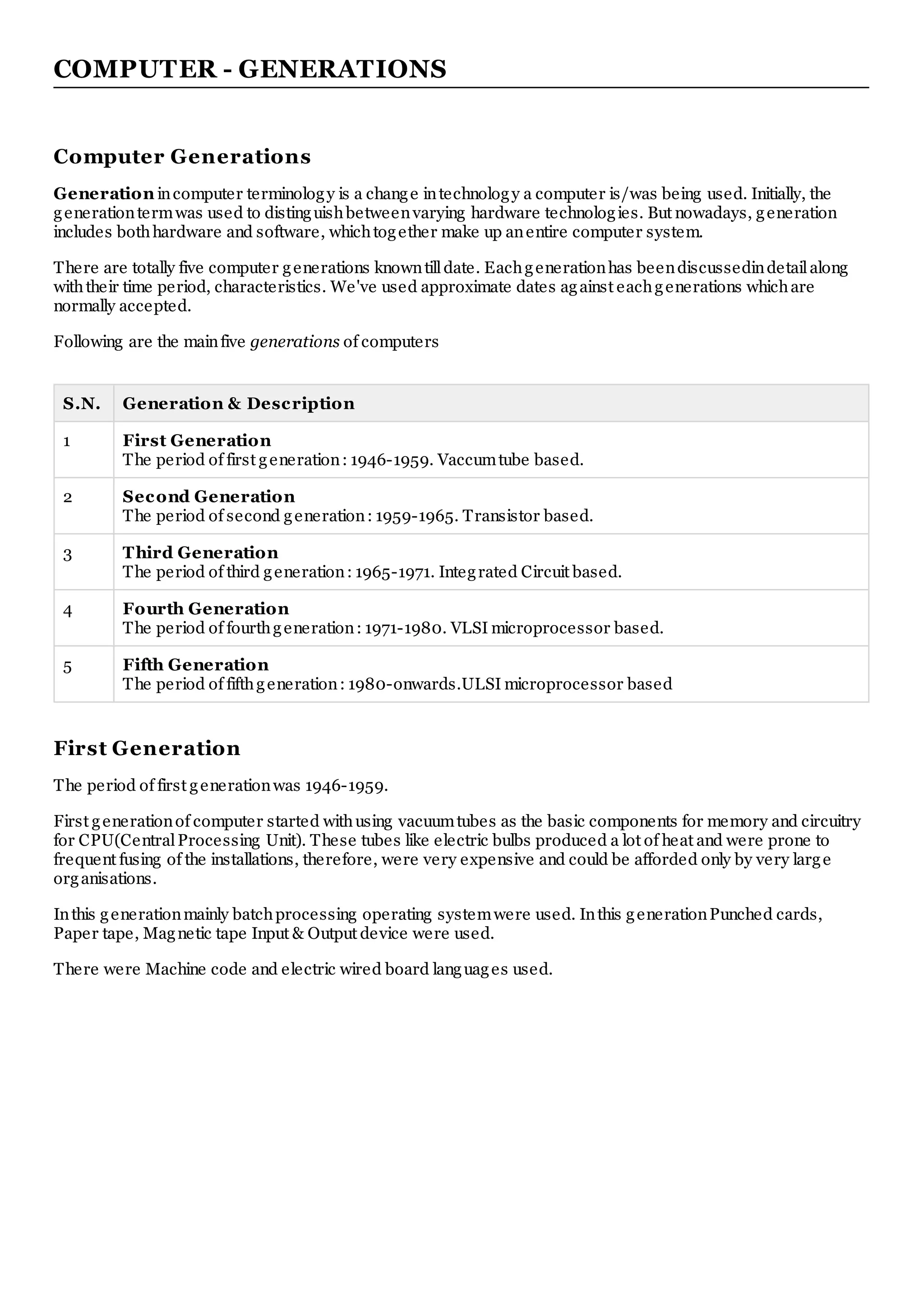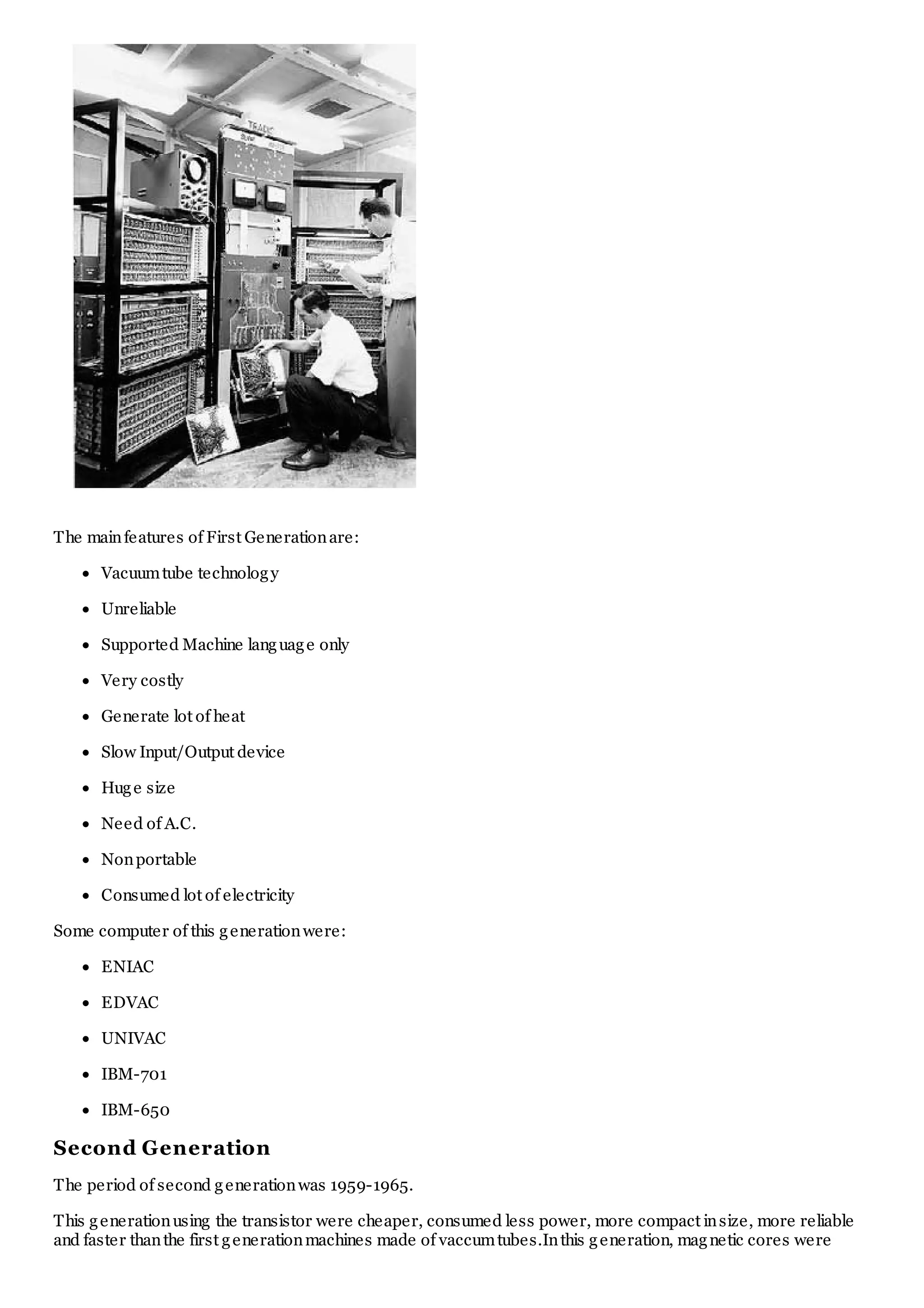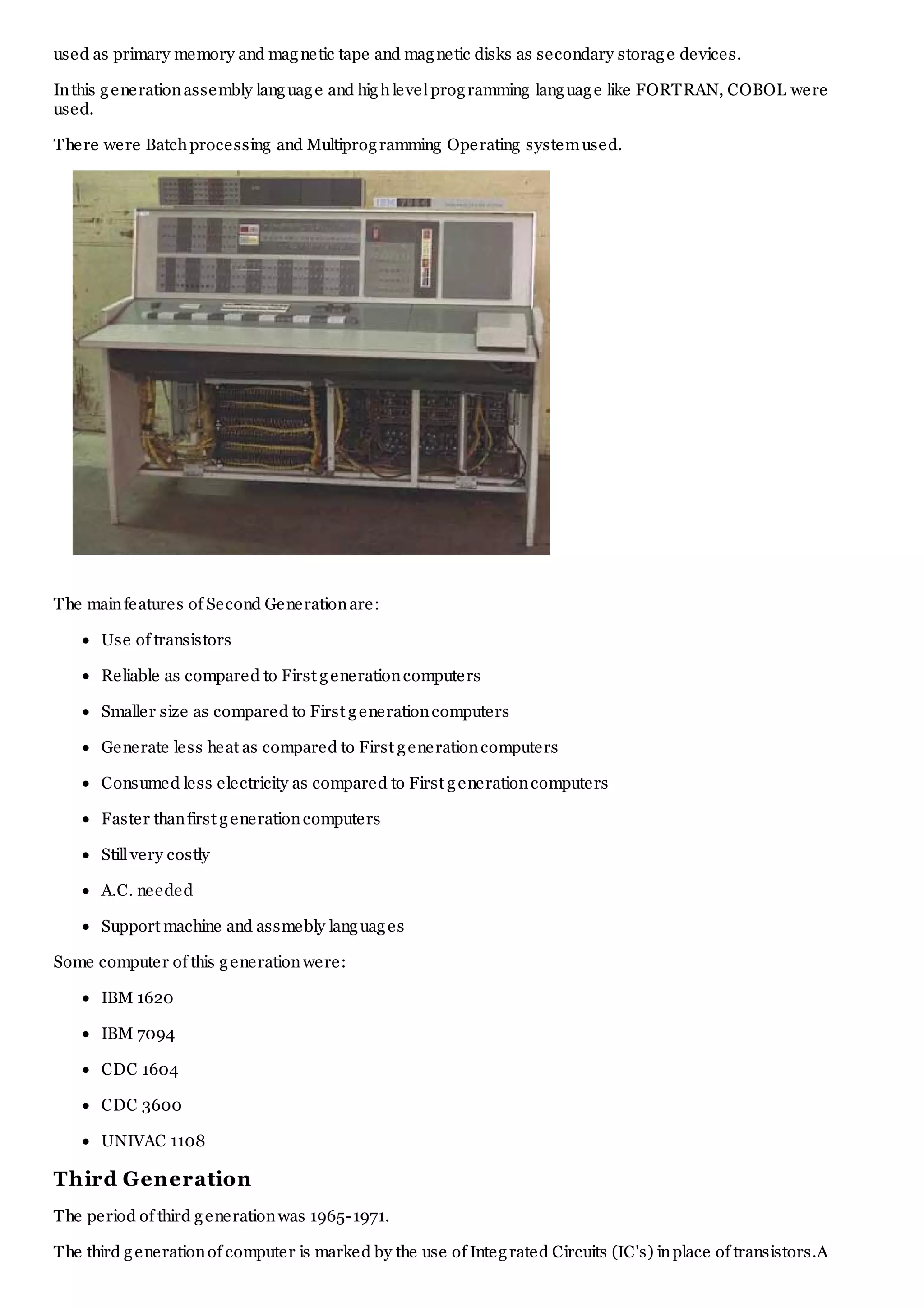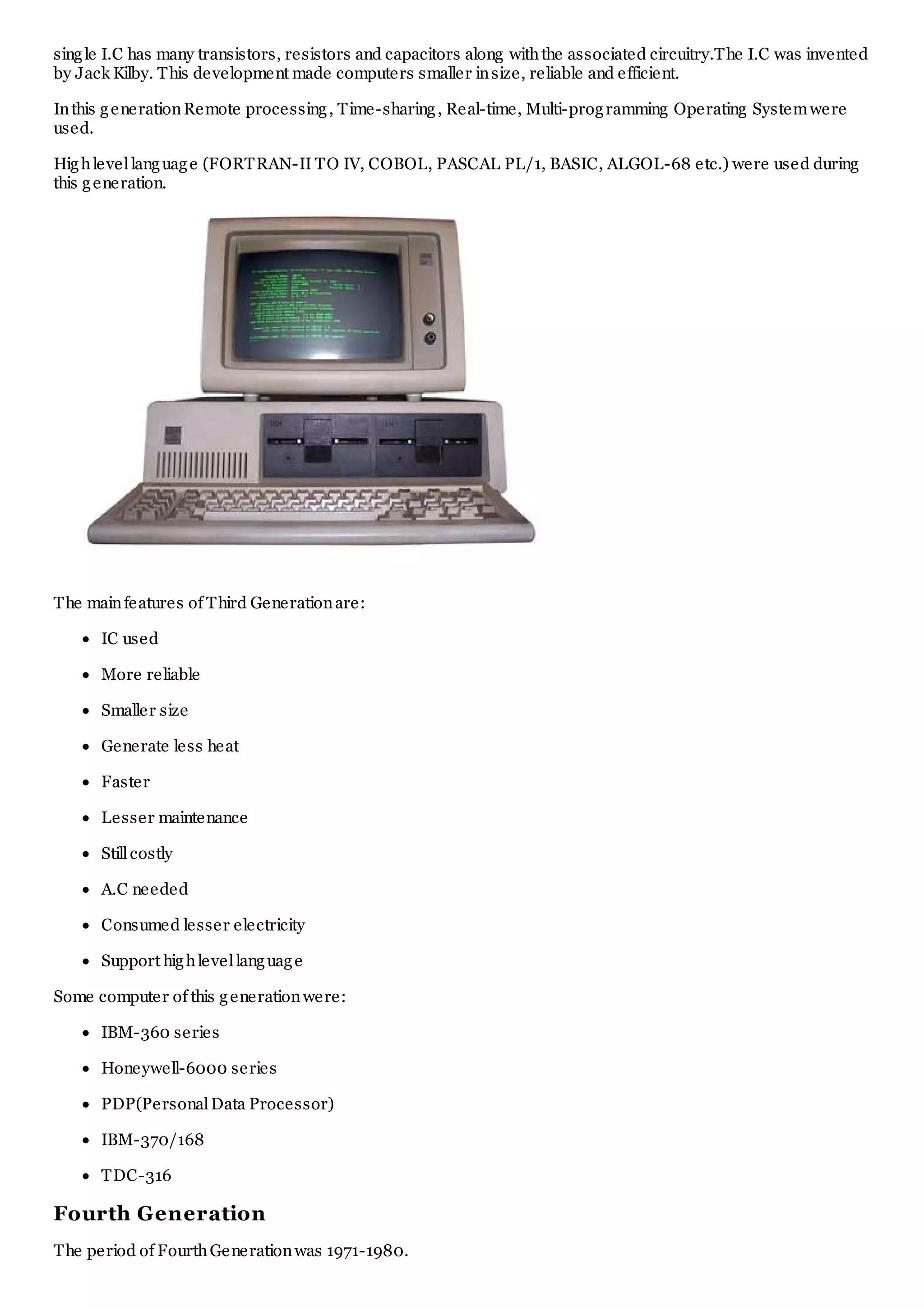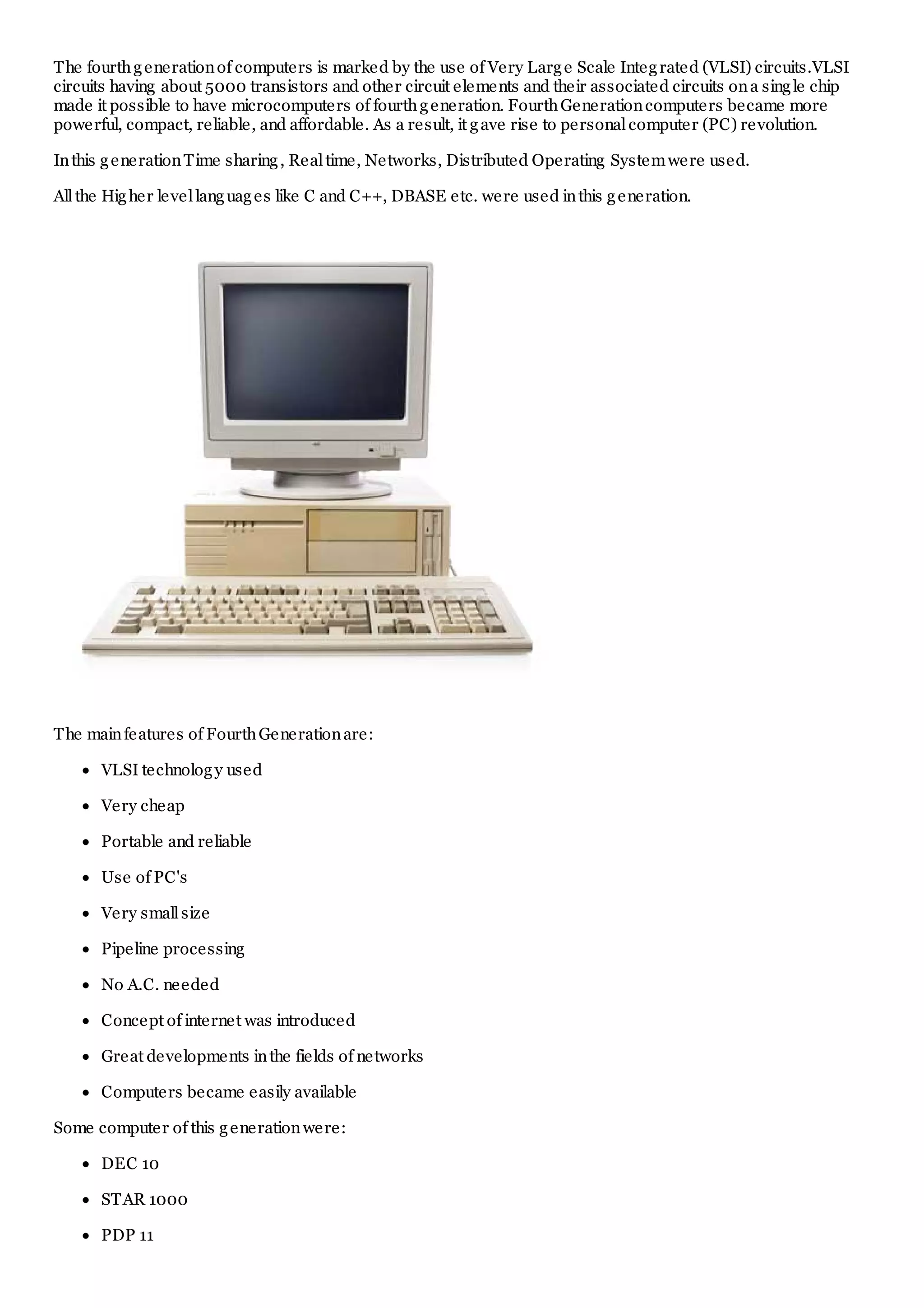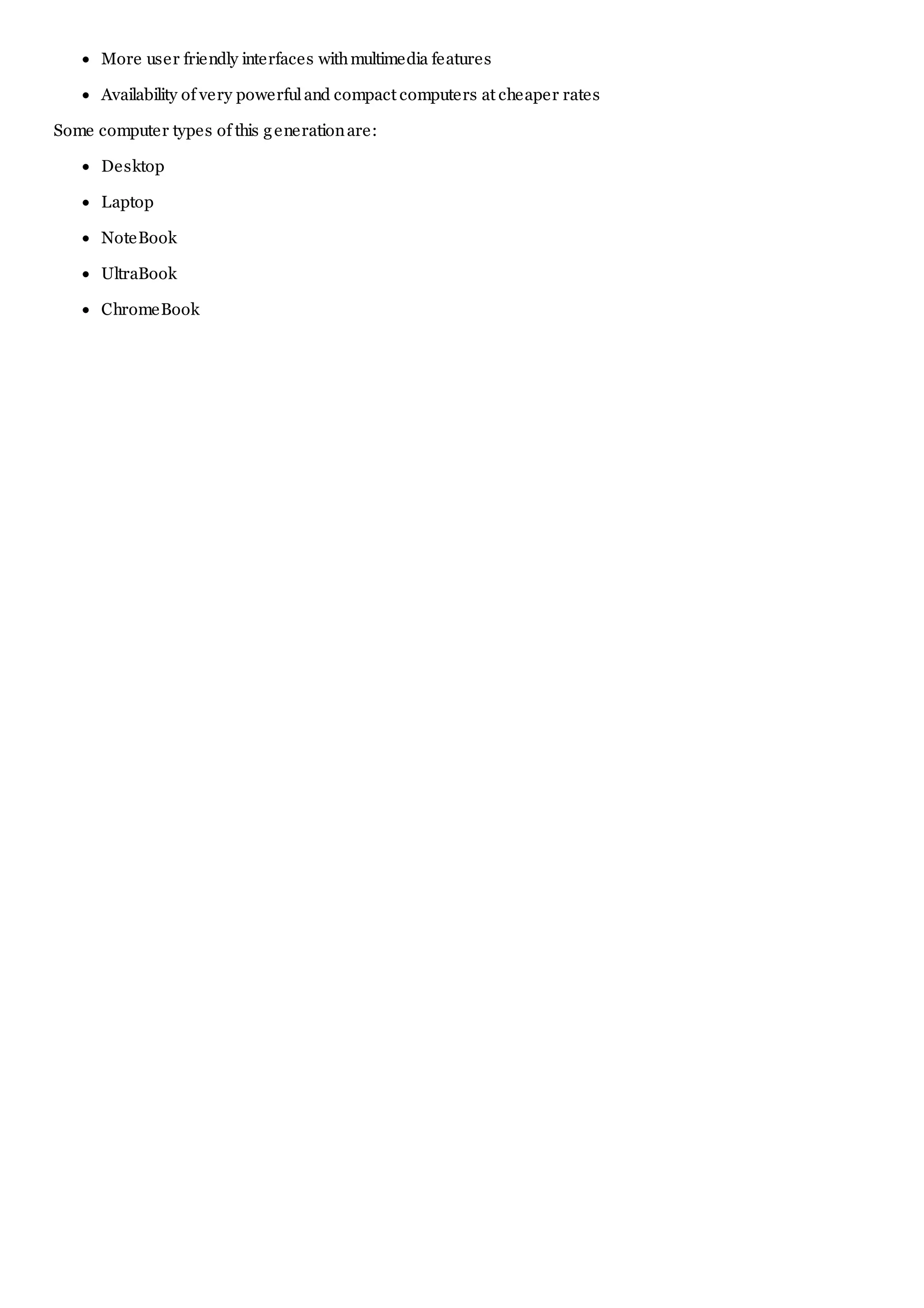There are five generations of computers defined based on the underlying hardware technology used. The first generation used vacuum tubes and were very large, expensive, and unreliable. The second generation introduced transistors, making computers smaller, more affordable, and reliable. The third generation used integrated circuits, further miniaturizing computers. The fourth generation saw the rise of microprocessors and personal computers. The fifth generation, starting in 1980, is based on ultra-large scale integration and artificial intelligence techniques.
